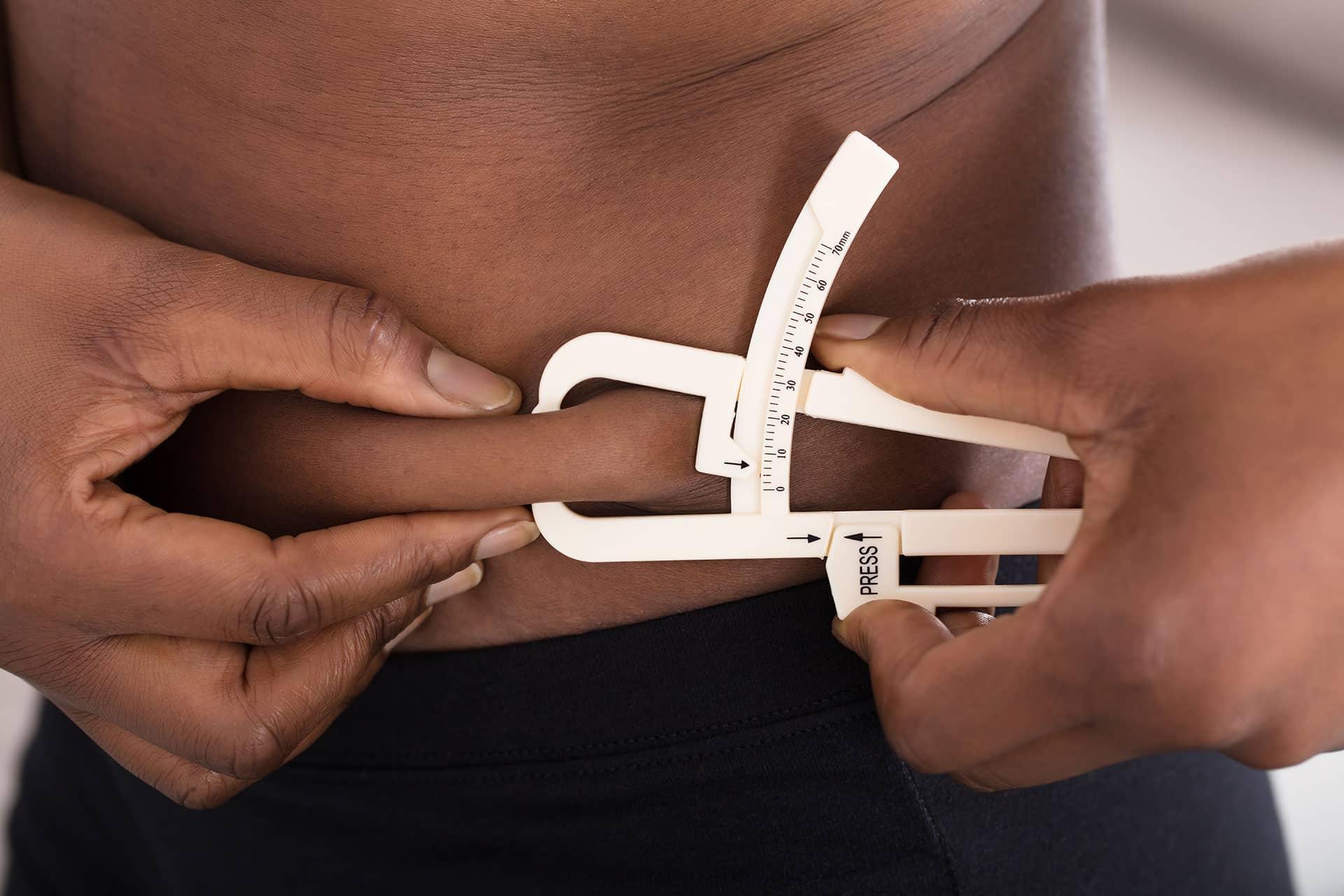Measuring body fat with calipers is one of the most accessible and widely used methods for tracking changes in body composition. According to research, when performed correctly, skinfold measurements using calipers can provide a reliable estimate of body fat percentage with an accuracy rate comparable to more advanced techniques. This hands-on approach allows individuals to track their progress over time, making it a valuable tool for both athletes and fitness enthusiasts alike.
To measure your body fat with calipers, all it takes is a few simple steps. Depending on the body fat calculation method you choose, measurements can be performed solo or with a partner.
If you’re looking for a simpler, non-caliper method, we recommend US Navy or Body Mass Index (BMI).
Body Fat Caliper Procedures
To perform skinfold measurements with a body fat caliper, follow these 5 easy steps:
- Using the tips of your thumb and forefinger on one hand, pinch the skin in the location to be measured
- Once the skin is pinched, pull the skin away from the muscle
- With your opposing hand, measure the thickness of the skinfold with your calipers
- Note caliper reading, then release caliper and skinfold
- Proceed to the next measurement location and repeat these steps
Quick Tips for Improving Body Fat Caliper Accuracy
- For consistency, all measurement should be acquired from the right side of the body
- Body fat caliper should be placed approximately 1/4 inch, or 1 centimeter, away from the thumb and finger that is grasping the skinfold
- Body fat caliper should remain perpendicular to skinfold, and halfway between crest and base of fold
- When measuring skinfolds with a caliper, wait 1 to 2 seconds before reading caliper measurement
- Skinfold pinch should be maintained while reading the caliper
- Take duplicate measurements at each site to ensure accuracy – same-site measurements should vary by no more than 2 millimeters
- Before remeasuring, rotate through skinfold sites to allow time for skin to regain normal texture and thickness
Getting started with body fat calipers may feel a bit daunting at first, but with the right technique, it becomes a straightforward and reliable way to monitor your body composition. By following the steps outlined above, you’ll quickly gain confidence in your ability to take accurate measurements. Whether you’re tracking progress on your own or with a partner, regular body fat testing can give you deeper insights into your fitness journey. Remember to take consistent measurements, use the correct skinfold sites, and allow time for your skin to normalize between measurements for the most accurate results. Over time, this can become an invaluable part of your health routine, helping you adjust your nutrition and training as needed to stay on track.



